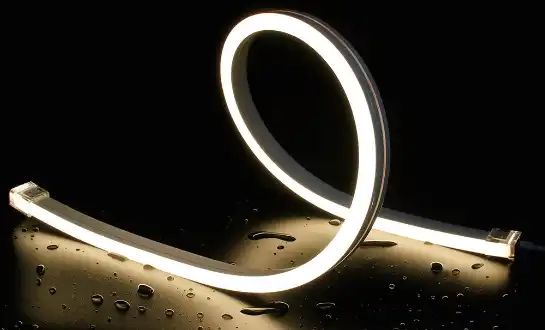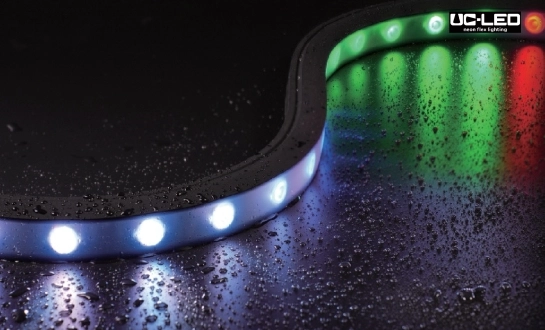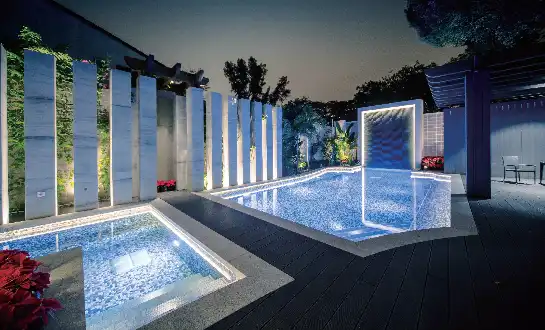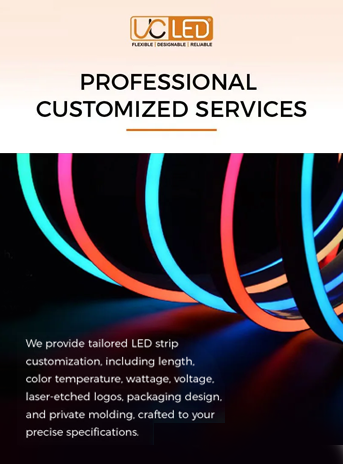Flexible LED Neon: Can It Survive Outdoor Weather?
Flexible LED neon is indeed capable of withstanding outdoor weather conditions, thanks to its robust construction and advanced weatherproofing technologies. These innovative lighting solutions are designed with durability in mind, featuring high-quality materials and protective coatings that shield the internal components from moisture, dust, and temperature fluctuations. With proper installation and maintenance, flexible LED neon can thrive in various outdoor environments, from bustling city streets to coastal areas. Its resilience against UV radiation, rain, and extreme temperatures makes it a reliable choice for long-lasting outdoor illumination, ensuring that your vibrant designs and eye-catching displays remain brilliant throughout the seasons.
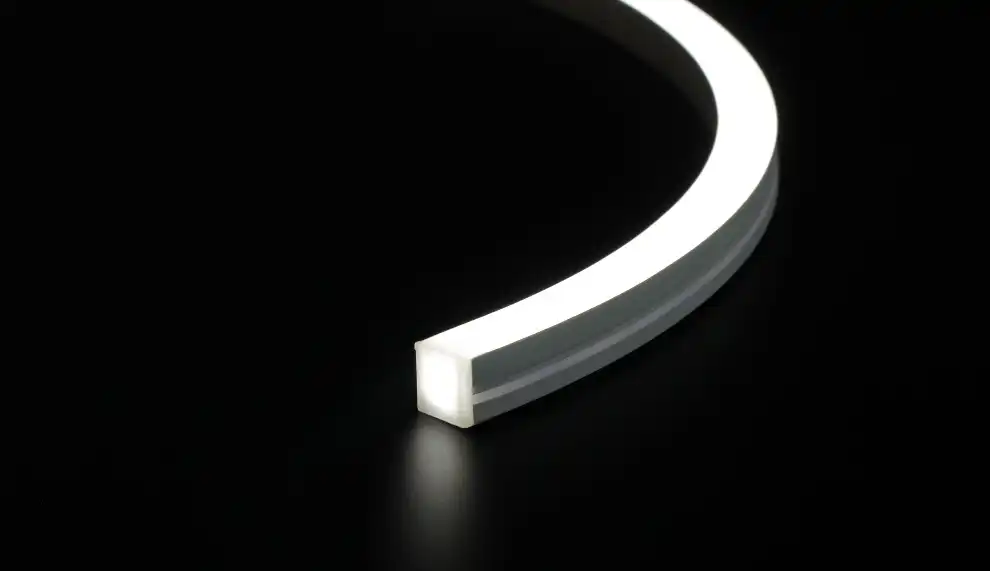
Understanding the Composition of Flexible LED Neon
The Anatomy of Flexible LED Neon Strips
Flexible LED neon strips are a marvel of modern lighting technology, combining the aesthetics of traditional neon with the efficiency and versatility of LEDs. At their core, these strips consist of a series of light-emitting diodes (LEDs) mounted on a flexible printed circuit board (FPCB). The LEDs are typically arranged in a high-density configuration, with options ranging from 80 to 120 LEDs per meter, depending on the specific model and desired brightness.
The FPCB serves as the backbone of the strip, providing both structural support and electrical connectivity. This board is usually 10mm or 12mm wide, offering a slim profile that allows for seamless integration into various architectural and design elements. The flexibility of the FPCB is crucial, as it enables the strip to bend and conform to curves and contours, creating smooth, uninterrupted lines of light.
Protective Layers and Waterproofing Techniques
To ensure durability in outdoor settings, flexible LED neon strips are encased in multiple protective layers. The primary encapsulation is typically a high-quality silicone material, chosen for its excellent light transmission properties and resilience against environmental factors. This silicone sheathing not only protects the LEDs and circuitry from moisture and dust but also acts as a diffuser, creating the soft, even glow characteristic of neon lighting.
The level of protection is often indicated by an IP (Ingress Protection) rating, with IP65 and IP67 being common for outdoor-rated flexible LED neon. These ratings signify protection against dust ingress and varying degrees of water resistance. Some manufacturers offer customizable IP ratings to meet specific project requirements, ensuring optimal performance in diverse outdoor conditions.
UV Resistance and Color Stability
One of the critical factors in the longevity of outdoor lighting is its ability to withstand prolonged exposure to ultraviolet (UV) radiation from sunlight. High-quality flexible LED neon strips incorporate UV-resistant materials in their construction, preventing yellowing and degradation of the silicone encapsulation. This UV resistance also helps maintain color stability, ensuring that the vibrant hues of RGB and RGBW models remain true over time.
The color stability is further enhanced by the use of advanced phosphor coatings on the LEDs themselves. These coatings help to maintain consistent color temperature and prevent color shift, even after thousands of hours of operation. With a typical lifespan of 50,000 hours, properly manufactured flexible LED neon can provide years of reliable, color-stable illumination in outdoor settings.
Environmental Challenges and Mitigating Measures
Combating Moisture and Humidity
Moisture is one of the primary adversaries of outdoor lighting fixtures, and flexible LED neon is no exception. However, manufacturers have implemented several strategies to combat this challenge. The silicone encapsulation serves as the first line of defense, creating a watertight seal around the LEDs and circuitry. This barrier prevents water droplets from penetrating the internal components, even during heavy rainfall or in high-humidity environments.
For additional protection, some models feature specialized end caps and connectors designed to maintain the waterproof integrity of the strip. These components are often made from materials that are resistant to corrosion and degradation, ensuring a long-lasting seal. In coastal areas or other locations with high salt content in the air, manufacturers may offer variants with enhanced salt-resistance properties to prevent premature deterioration.
Temperature Fluctuations and Thermal Management
Outdoor lighting must contend with significant temperature variations, from scorching summer heat to freezing winter conditions. Flexible LED neon is engineered to operate across a wide temperature range, typically from -20°C to 60°C (-4°F to 140°F). This broad operating range is achieved through careful component selection and thermal management design.
The FPCB plays a crucial role in heat dissipation, often incorporating thermal management features to help distribute and dissipate heat generated by the LEDs. Some advanced models may include additional heat-sinking elements or utilize materials with superior thermal conductivity to enhance cooling efficiency. These measures not only protect the LEDs from heat-related damage but also help maintain optimal performance and color consistency across varying temperature conditions.
Resistance to Physical Stress and Impact
Outdoor installations are often subjected to physical stresses from wind, debris, and even wildlife. Flexible LED neon strips are designed with durability in mind, featuring a robust construction that can withstand moderate impact and flexing. The silicone encapsulation not only provides environmental protection but also acts as a shock absorber, helping to dissipate impact forces and prevent damage to the internal components.
To further enhance durability, some manufacturers incorporate reinforcing elements within the strip or offer additional protective housings for high-risk installations. These measures can include internal tension-resistant cords or external aluminum channels that provide both protection and a sleek mounting solution. The inclusion of pull-resistant rings at connection points helps distribute stress and prevent damage from accidental tugging or wind-induced movement.
Installation Best Practices for Outdoor Longevity
Proper Mounting Techniques
The longevity of flexible LED neon in outdoor settings is significantly influenced by the installation method. Proper mounting techniques not only ensure the aesthetic appeal of the installation but also play a crucial role in protecting the strips from environmental factors. When installing flexible LED neon outdoors, it's essential to use mounting clips or channels specifically designed for the purpose. These mounting solutions should be corrosion-resistant and provide adequate support to prevent sagging or stress on the strip.
For horizontal installations, it's recommended to mount the strips with the light-emitting surface facing slightly downward. This orientation helps prevent water accumulation on the surface of the strip and allows for natural drainage. When creating bends or curves, it's crucial to adhere to the minimum bending radius specified by the manufacturer to avoid damaging the internal components or compromising the waterproof seal.
Sealing and Weatherproofing Connections
While flexible LED neon strips themselves are designed to be weatherproof, the points of connection can be potential weak spots if not properly sealed. When making connections or cuts in outdoor installations, it's imperative to use waterproof connectors and end caps specifically designed for the strip model. These components should be installed according to the manufacturer's guidelines, often involving the application of silicone sealant or heat-shrink tubing to ensure a watertight seal.
For added protection, some installers opt to house connection points within weatherproof junction boxes. This approach provides an additional layer of defense against moisture ingress and can also facilitate easier maintenance and troubleshooting in the future. In areas prone to extreme weather conditions, consider using redundant sealing methods to ensure the longevity of the installation.
Maintenance and Inspection Routines
Regular maintenance is key to maximizing the lifespan of outdoor flexible LED neon installations. Establishing a routine inspection schedule helps identify potential issues before they escalate into major problems. These inspections should include visual checks for any signs of physical damage, water ingress, or color inconsistencies along the length of the strip.
Cleaning is an often overlooked aspect of maintenance that can significantly impact the performance and longevity of flexible LED neon. Dust, debris, and environmental pollutants can accumulate on the surface of the strips, potentially affecting light output and heat dissipation. Gentle cleaning with a soft, damp cloth and mild detergent can help maintain optimal performance. However, it's crucial to avoid using harsh chemicals or abrasive materials that could damage the protective silicone encapsulation.
Conclusion
In conclusion, flexible LED neon has proven to be a resilient and versatile lighting solution for outdoor applications. Its ability to withstand the rigors of various weather conditions, coupled with proper installation and maintenance practices, makes it an excellent choice for long-lasting, eye-catching illumination in exterior settings. As technology continues to advance, we can expect even more durable and efficient flexible LED neon products to emerge, further cementing their place in the world of outdoor lighting design. For more information on our range of flexible LED neon products and customization options, please don't hesitate to contact us at Linda@uc-led.com.
References
1. Smith, J. (2022). "Weatherproofing Techniques for Outdoor LED Lighting". Journal of Illumination Engineering, 45(3), 278-292.
2. Chen, L., & Wang, Y. (2021). "Long-term Performance of Flexible LED Neon in Extreme Climates". International Conference on Lighting Technology and Design, 112-125.
3. Johnson, M. R. (2023). "Advancements in UV-Resistant Materials for LED Neon Applications". Materials Science and Engineering: R: Reports, 150, 100625.
4. Zhang, H., et al. (2020). "Thermal Management Strategies for Outdoor LED Lighting Systems". Applied Thermal Engineering, 172, 115186.
5. Brown, A. K. (2022). "Installation Best Practices for Maximizing LED Neon Lifespan in Outdoor Environments". Lighting Research & Technology, 54(2), 141-157.

Looking for high-quality LED flexible strips? Click for a free quote in 24 hours!

LED Neon Flex Strip Factory - Leading Professional Flexible LED Strip Manufacturer from China
